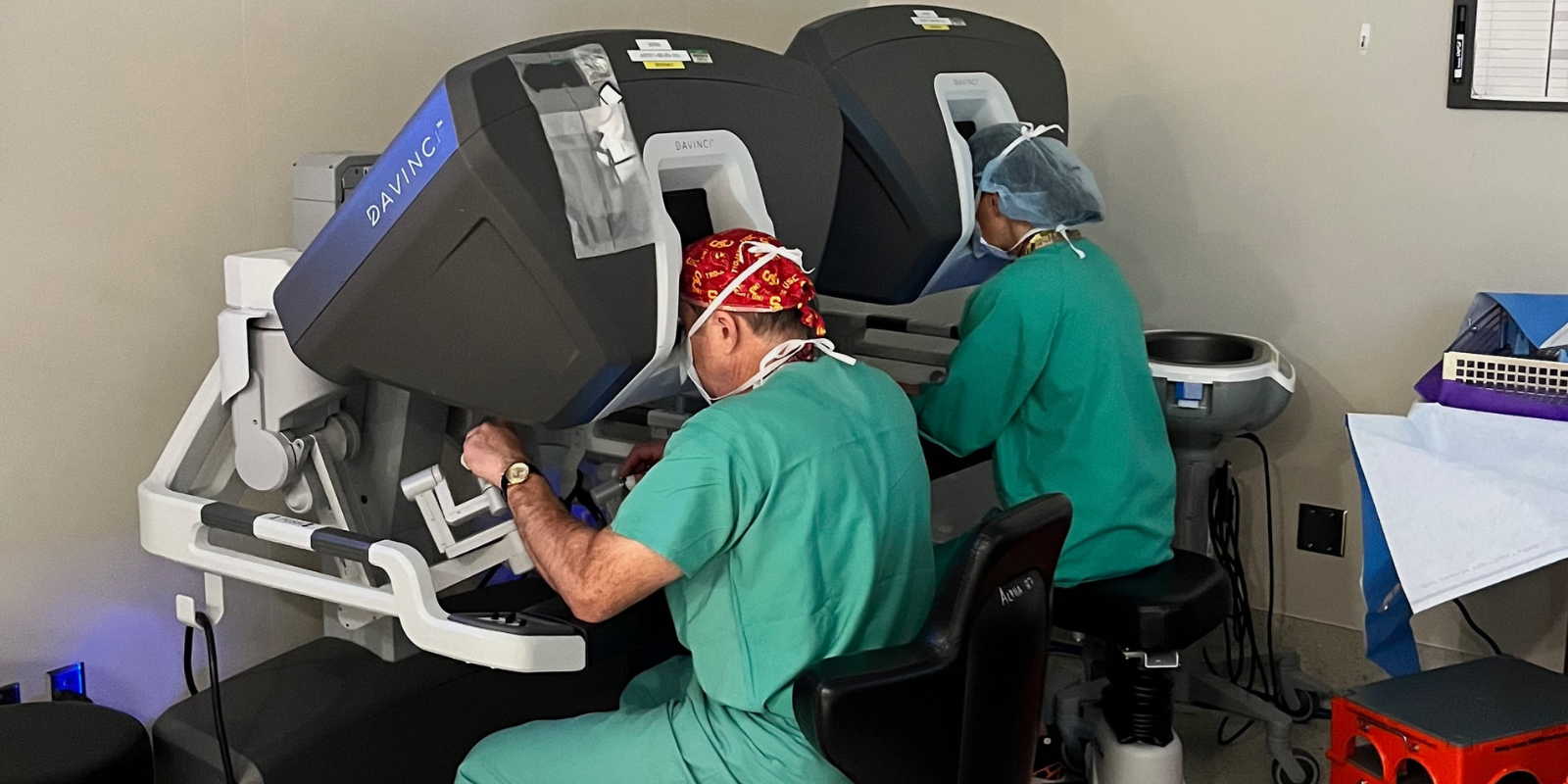Why have patients with high BMIs previously been denied access to kidney transplants?
The main reason is that there's a higher complication risk with the traditional surgery. The bigger the abdomen is, the farther away you are from the blood vessels you need to sew the kidney to. As that distance increases, the complication risk gets bigger. With the robot, we're able to transplant virtually anybody, because we are operating on the inside instead of standing on the outside operating. That's what makes it possible.
Are we among the first surgery centers to perform this operation on people with high BMIs?
We're not the first center to do it — the University of Illinois did it in 2010 — but it's taken a very long time for this to make its way into the transplant community because of the huge learning curve. I was trained as a urologist prior to transplant surgery, and I came in with a lot of robotic experience, so for me, it was really easy to pick up.
Did you have to do a lot of additional training to learn how to do this specific operation?
Yes, for sure. Because the stakes are really high. Someone's donated an organ, and we have to get it into the recipient in a certain amount of time. And you're sewing on major blood vessels. I built a model out of little rubber tubes that simulate blood vessels, and I practiced on that over and over until I had the procedure down to a reasonable time.
What's the difference between doing this surgery on a patient with a lower BMI, as opposed to those with a higher BMI?
Robotically, there really is no difference. There are actually more benefits to doing it robotically. Visualization is markedly improved — I have 10-times vision, versus what my eyes can normally see. I can see detail that is not available just using my eyes and my surgical glasses. And all the incisions are remarkably small, so the patients don't have any pain. For the 10 we've done so far, no one's required narcotics. Once a surgeon can get past the learning curve, the benefits of robotic transplant certainly outweigh that of open surgery.
Are you using the robot exclusively on high-BMI patients at this point?
That’s the population that we focus on with the robot for now. I would do it for every transplant if I could, because I believe it's that much better. But there are a lot of logistics and OR issues trying to get the robot when I need it. A lot of times, especially with deceased donors, kidneys are just coming in as they become available, so trying to get space on the robot is nearly impossible. The ideal scenario right now is that we have a live donor, and then we can schedule it in the daylight hours and have the teams available.
Is it an exaggeration to say this is lifesaving for these patients?
Not an exaggeration at all. We don't have to deny anybody access to kidney transplants anymore based upon their BMI. Roughly a quarter to a third of the U.S. population has a BMI over 35 now, and that number is set to grow even higher. If you extrapolate that to who's on dialysis right now, or who needs a kidney transplant right now, it's about a fourth or a third of patients who are universally denied because they're too big. This really opens the door for all those patients.
What was the protocol previously for these patients? Were they told to lose weight before they could qualify for the surgery?
That's usually the protocol: “Go try to lose 50 pounds and come back.” The success rate of that is very low, because these are patients who have kidney failure. They're chronically fatigued, they're tethered to a dialysis machine three times a week, they have dietary restrictions, and it's almost impossible to have somebody in that situation go lose 50 pounds. If they are successful, they still end up with all this extra soft tissue, and that puts them at risk for complications — wound infections and things like that. Even if they could be successful, it's still not a perfect scenario to do the transplant, whereas robotically, it just doesn't matter.
How does it feel to be able to offer this option to patients who previously had little hope of receiving a transplant?
It's great. That's why I went into transplant, to save people's lives and give them a quality of life so that they could go do things and be productive members of society. The fact that we're able to offer transplant to this group that has been universally denied for decades is really great!





